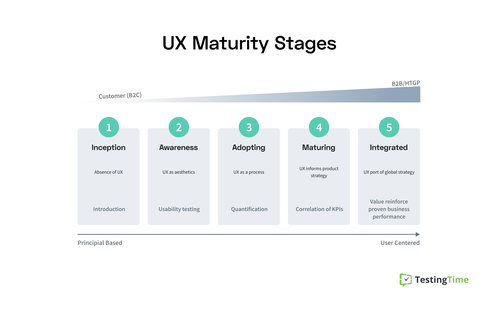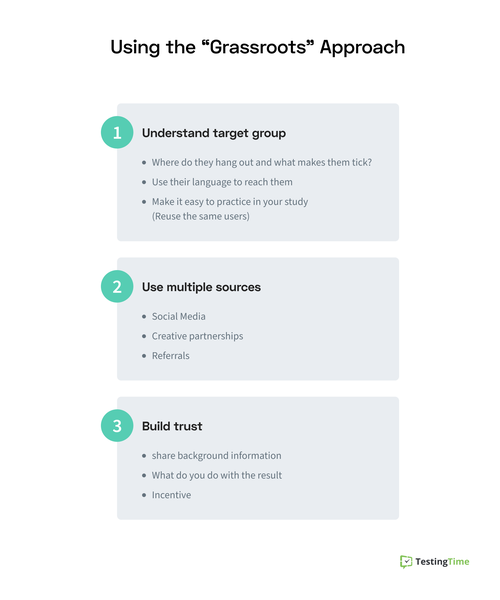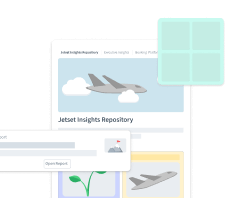
How to Find Hard-to-Get Participants for Your User Research
User research is often only as good as the participants recruited. However, sometimes finding the right participants for research can be challenging – especially when you're trying to reach a specific group of people who are hard to get. Just think about it: what if you had to recruit 100 curly haired women to test a new hair dryer or male pole dancers before opening a studio? There might be numerous funny profile examples – you name it!
Reto Lämmler, a Co-Founder & CEO of TestingTime, showed several approaches of how to tackle such challenges in one of our recent UX Research Munich Community meetups. Based on his talk, this article explores strategies for finding hard-to-find participants. Use our tips next time you face a recruiting challenge, and don't let elusive participants hold back your user research.
What are Hard-to-Get Participants (HTGP)?
Firstly, it's important to have a clear understanding of how to define hard-to-get participants and how to distinguish them from the rest of your sample.
Hard-to-get participants can be typically identified by:
Low incidence rate (IR).
Unavailability due to schedule, location or no digital presence
Privacy, sensitivities, or stigma issues
Other disabilities
Let’s stop here for a second. The IR might be as low as 1%, which means one in a hundred people have particular characteristics that make them difficult to recruit. Even so, you shouldn't ignore hard-to-get participants in your user research. Now, keep reading and learn why.
HTGP: Why should you care?
The value of user research has been evolving over the years, which is reflected in the common UX maturity framework. As a recruiting platform, TestingTime, for example, sees changes in the types of user profiles requested and, accordingly, the types of people researched. The more companies increase their UX maturity, the further they go into niche profiles.


As UX maturity levels increase, accessibility and inclusivity become more important.
Accessibility and inclusivity refer to meeting the needs of diverse audiences. Such factors as race, gender, sexual orientation, social class, age, and others largely impact the way people experience products and services. Long story short: There's no one size fits at all anymore! All these unique user groups need to be included in the research of a modern inclusive organization.
Did you get enough reasons to include a diverse scope of research? Let's learn how to find and engage hard-to-reach participants.
“Grassroots” approach
The first effective way to find HTGP is the so-called "grassroots" approach. It focuses on engaging and mobilizing people at the local level to actively participate in a cause, event, or organization. This approach involves reaching out to people within communities, neighborhoods, or specific interest groups to recruit participants who are genuinely interested and invested in the cause. If you are embarking on a one-time project or testing a hypothesis, it may be best to use the "grassroots" approach.
Here’s how you can bring it into action:
The first step is to understand your target group. Immerse yourself in their world and connect with them authentically. Seek to comprehend where they gather, what interests them, and what motivates them. Ensure participation is easy and strive for positive experiences.
Later on, acquiring your target group requires thinking out-of-the box. Utilize referrals and actively seek individuals through various channels. Tap into personal networks and ask for recommendations to find the right participants.
Finally, building trust is paramount. Transparently communicate your study's purpose, intentions, and what you plan to do with the results. Provide incentives that resonate with participants, beyond just monetary rewards. The key is to make them feel valued and avoid exploitation. Cultivate sincerity and authenticity in your interactions to establish trust and enable successful grassroots approaches.
As a brief summary, you might use the framework below.

Let's take a look at real-life scenarios. Here are two examples to illustrate the “grassroots” approach.
In one instance, the Van Gogh Museum in Amsterdam wanted to test a 3D yard and attract 150 Chinese tourists. They collaborated with a local tour guide who integrated the 3D yard experience into the tour program, providing a seamless visit to the museum. The participants saw it as an exciting part of their tourist adventure, requiring no payment. As a result, the study was a resounding success.
Another captivating case involves a beer brand aiming to understand the preferences of busy C-level entrepreneurs and decision-makers at bars. They organized an exclusive rooftop event, offering networking opportunities, complimentary drinks, and food. This approach successfully appealed to the audience's desire for networking and access to exclusive experiences, and effectively captured insights into their bar preferences.
To sum up, using the “grassroots” approach might fit best for a one-off study. However, if you have a recurring need to do user research, consider your private pool or private panel.
Private pool (panel) approach
In situations requiring a consistent pool of participants for user research, building your own user database is a valuable investment. A notable example comes from the medical field, where company X specializes in developing devices for diabetes patients. With physical device testing requiring on-site evaluations, a Private Pool solution was needed.
To address this challenge, the company partnered with TestingTime to create a customized and co-branded private pool. Referrals from TestingTime's Public Pool and social media efforts, including impactful Instagram posts, were leveraged. The company also established a dedicated landing page on its website, expanding recruitment channels. Additionally, TestingTime collaborated with diabetes support institutions and local groups to further widen recruitment avenues. These combined efforts successfully recruited approximately 1,500 participants across Switzerland, Germany, and the UK, providing a substantial pool for ongoing recruitment.
Flexibility is crucial when working with specific groups like diabetes patients. Adapting to their unique needs and being sensitive to their requirements is essential. On-site interactions are often necessary for medical device testing or when prioritizing convenience for participants, such as the elderly or parents of young children. Conducting research in participants' homes or preferred locations can enhance their willingness to participate. On the other hand, remote research offers advantages such as access to a larger participant pool and streamlined recruitment. Remote research is particularly helpful when targeting broader geographic areas.
If none of the approaches seems feasible, “no-user” research might be helpful instead.
UX expert reviews
When it comes to conducting “no-user” research, there’s an alternative approach known as UX expert reviews. This method involves UX experts stepping into the users' shoes to identify usability issues and strengths in the design. This approach gained significant attention, with the Norman Nielsen Group emphasizing its value. While it may not be applicable for certain aspects like interviews, it proves particularly useful for usability testing.
During usability testing, UX experts utilize heuristics to evaluate the design. These heuristics provide a set of guidelines to assess usability problems based on established principles. With the knowledge and understanding of these heuristics, a UX expert can effectively pinpoint usability issues without requiring direct user involvement.
This approach requires a test object, test scenarios, and a skilled UX expert to facilitate the analysis. By utilizing these elements, you can effectively identify and address usability concerns without necessarily involving users in the testing process.
However, it's important to note that while UX expert reviews can provide valuable insights, it does not replace the benefits gained from direct user involvement. User research involving real users brings authentic perspectives, uncovering insights that may not be apparent to even the most experienced UX expert. A comprehensive user research strategy should ideally combine both UX expert reviews and direct user engagement to achieve the most accurate and holistic understanding of the user experience.
Using AI for UXR recruiting
Modern AI-based user simulations have emerged as an intriguing area of research, leveraging tools like ChatGPT. Recently, Harvard Business School and Microsoft published a notable paper, which utilized ChatGPT for market research. Instead of conducting surveys with real users, they employed ChatGPT to generate survey data by framing prompts in a conversational manner. This raises the question of whether we can rely on synthetic data generated through AI models to supplement traditional participant-based research methods. Perhaps the future lies in a hybrid approach, where a portion of the data is organically sourced through real participants, while the rest is obtained synthetically. It's an intriguing prospect that time will undoubtedly shed more light on.
Nethertheless, while AI-based user simulations present exciting possibilities, they should not be viewed as a complete replacement for user research involving real individuals. Human insights and perspectives are invaluable and often provide nuances that AI simulations may not capture.
Wrap-up
Understanding and addressing the challenges posed by Hard-to-Get Participants (HTGPs) is essential for comprehensive user research. Some possible approaches to finding and engaging them include:
The "grassroots" approach: implies tapping into personal networks, seeking referrals, and leveraging word-of-mouth. It fosters authenticity and establishes a genuine connection with participants.
The private pool or panel approach: building a dedicated database allows for targeted recruitment and streamlined engagement. However, it's important to balance the benefits with potential biases that may arise from reusing participants.
No-user research: using UX expert reviews to uncover usability issues and strengths or AI to generate survey data and simulate user interactions, supplementing traditional participant-based research methods.
Watch recording 🎥
This article is based on a talk by Reto Lämmler, a co-founder & CEO of TestingTime, at the UX Research Meetup in June 2023. You can watch the full video here:
/f/99166/1664x936/63f912aaf7/uxr-talk-reto.png)







